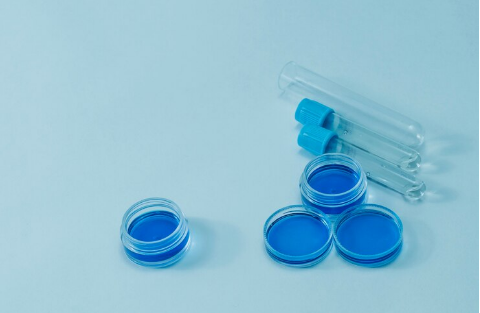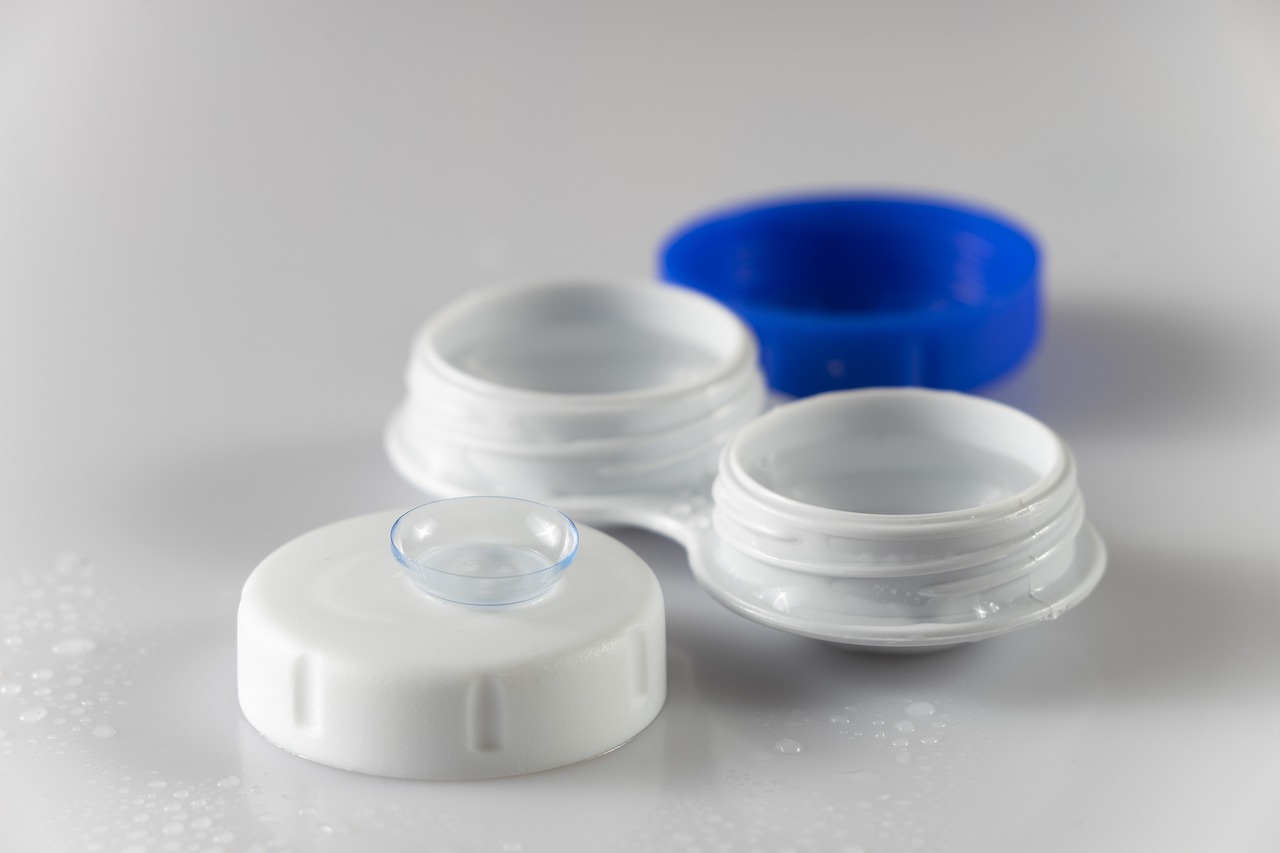How To Remove Contact lens For Beginners( Complete Guide)

Follow our blog with Bloglovin
There are different methods for removing both soft and hard contact lenses, allowing you to choose the one that suits you best. Regardless of the method, it's important to practice good hygiene when handling your lenses or touching your eyes.
Our research article shows that around 45 million people in the United States wear contact lenses. While contact lenses often serve as an alternative to glasses, they come with their own unique care and usage guidelines.
At first, learning proper contact lens etiquette can seem daunting. However, with enough practice, inserting and removing your lenses will become second nature. This guide provides step-by-step instructions for safely removing both soft and hard contact lenses and offers tips on handling potential complications related to contact lens use.
Table of Contents
Contact lenses Removal Guidelines
The American Academy of Ophthalmology highlights two main types of contact lenses commonly used for vision correction: hard lenses, which are more rigid and often recommended for extended wear, and soft lenses, which are more comfortable and come in various forms like daily wear, extended wear, toric, colored, and cosmetic options.
Following this, you'll find detailed instructions on how to safely remove both types of lenses.
How to Remove Soft Lenses
Here’s a step-by-step guide to safely removing your contact lenses:
- Wash Your Hands:
- Use soap and water to thoroughly clean your hands.
- Avoid using heavily scented soaps, as they can irritate your eyes.
- Refrain from applying lotion or other substances to your hands before handling your lenses.
- Dry Your Hands:
- Use a clean, lint-free cloth or a paper towel to dry your hands completely.
- This helps prevent any debris or bacteria from transferring to your eyes.
- Prepare Your Space:
- Place a clean hand towel beneath your eye to catch the lens if it drops.
- This is particularly useful if you’re removing lenses over a sink, reducing the risk of losing the lens.
- Hold Your Eyelids:
- Use your nondominant hand to gently hold open your lower and upper eyelids.
- While it's not mandatory to use your nondominant hand, it allows your dominant hand to be free for removing the lens.
- Remove the Lens (Method 1):
- With your dominant hand, use the index finger and thumb to gently pinch the contact lens on either side.
- Carefully pull the lens away from your eye, making sure not to pinch your eye directly.
- Remove the Lens (Alternate Method):
- Look up and use the index finger of your nondominant hand to press against the bottom of the lens.
- Slide the lens down and away from the center of your eye.
- Once the lens is further down, you can either slide it out or pinch it out with your thumb and forefinger.
How to Remove Hard Lenses
Here’s a simplified step-by-step guide to removing hard contact lenses:
- Wash Your Hands:
- Thoroughly clean your hands with soap and water.
- Avoid using heavily scented soaps to prevent eye irritation.
- Do not apply lotion or other substances before handling your lenses.
- Dry Your Hands:
- Use a clean, lint-free cloth or paper towel to dry your hands.
- Ensure your hands are completely dry to avoid transferring debris or bacteria to your eyes. Also read on How to Avoid Ripping Contact Lenses
- Prepare the Area:
- Place a clean hand towel under your eye to catch the lens if it falls.
- This precaution helps prevent losing the lens while removing it.
- Pinch Eyelids Together:
- Use your index fingers to gently pinch your upper and lower eyelids together.
- This action will lift the hard lens off your eye, making it pop out easily.
- Alternate Method:
- Pull the outer corners of your eyelids tight towards your ear using two fingers.
- As your eye naturally closes and blinks, the lens should pop out effortlessly.
How to Remove Stuck Contact Lenses
If a contact lens gets stuck in your eye, it can be uncomfortable or painful, but there's no need to worry. There are a few easy techniques you can use to gently remove the lens and relieve the discomfort.
Here are two methods to help remove a stuck contact lens:
- Blink while moving your eye up and down; this can help the lens settle back into its correct position.
- If you know where the lens is stuck, close your eye and gently use your finger to nudge the lens back into place.
If you can’t remove the stuck contact lens on your own, make an appointment with your eye doctor. They can examine your eye and safely remove the lens for you.
First Timers Tips
Learning to remove contact lenses can take some practice. If you’re still having difficulty, you might try using a contact lens remover, known as a "plunger," especially for hard lenses. This tool can be a helpful alternative if you’re not comfortable removing the lens with your fingers.
Here’s how to use a contact lens plunger to remove a hard lens:
- Start by thoroughly washing and drying your hands.
- Hold your eye open with one hand and grasp the plunger with the other.
- Moisten the tip of the plunger with saline solution before touching it to the lens.
- Gently press the plunger against the bottom of the lens and wiggle it slightly until the lens loosens.
Ensure that the plunger only touches the contact lens to avoid any potential injury to your eye.
Contact Lens Care Best Practices
If you're new to wearing contact lenses, it's important to follow these guidelines to ensure both your comfort and eye health:
- Update Your Prescription Regularly: Always use lenses that match your current prescription. Expired or outdated lenses can cause discomfort and vision problems, so check and update your prescription as needed.
- Avoid Reusing or Extending Lens Use: Disposable lenses are designed for single use or a specified period. Reusing them or wearing them longer than recommended increases the risk of infections and complications.
- Maintain a Clean Lens Case: Regularly clean your contact lens case with contact lens solution and let it air dry. Replace the case every three months to avoid the buildup of dirt and bacteria that could transfer to your lenses.
- Avoid Water Exposure: Never wear contact lenses while swimming or showering. Water can introduce harmful microorganisms to your lenses, potentially leading to infections and compromising the integrity of the lenses.
- Do Not Sleep in Your Contacts: Unless prescribed by your eye doctor, avoid wearing contact lenses while sleeping. Extended wear can lead to reduced oxygen flow to your eyes and increase the risk of eye infections.
- Consult Your Eye Doctor: For any issues with inserting, removing, or caring for your contact lenses, or if you experience discomfort, redness, or vision changes, seek advice from your eye doctor. They can provide guidance tailored to your needs and ensure your lenses are used safely.
Precautions
When handling contact lenses, it's crucial to be careful to protect your eyes. Here are some key precautions to keep in mind:
- Avoid Excessive Pinching: When removing soft lenses, pinching can help, but pinching too hard may tear the lens. Be gentle to avoid damage.
- Protect Your Cornea: Your eyes are very sensitive, so try not to touch or scratch the cornea while handling your lenses. Aim to avoid direct contact with your eye.
- Be Cautious with Long Nails: Long nails can accidentally scratch the lens or your eye. If you have long nails, take extra care when removing your lenses to prevent injury.
- Wash Your Hands: Before handling your lenses, always wash your hands thoroughly. Dirty hands can transfer bacteria to your eyes, increasing the risk of infection.
- Be Gentle: Overall, approach lens insertion and removal with a light touch to minimize discomfort and avoid potential damage.
By following these guidelines, you can safely handle your contact lenses and keep your eyes healthy.
When to call a doctor
Contact lenses are a widely used and safe option for vision correction, provided you maintain proper hygiene. However, if you experience symptoms such as eye pain, light sensitivity, blurred vision, or eye discharge, it’s important to see your eye doctor. These signs could suggest an infection, corneal damage, or other issues that need medical evaluation.
Wrap up
Getting used to removing contact lenses can be challenging for beginners. There are various methods for taking out both soft and hard lenses, and choosing the one that suits you best can help. It's essential to maintain good hygiene during the removal process to ensure the health of your eyes and the condition of your lenses. For detailed instructions on safely inserting contact lenses, you can refer to our guide.



